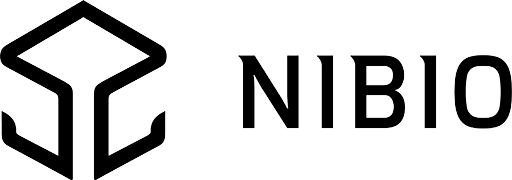Publikasjoner
NIBIOs ansatte publiserer flere hundre vitenskapelige artikler og forskningsrapporter hvert år. Her finner du referanser og lenker til publikasjoner og andre forsknings- og formidlingsaktiviteter. Samlingen oppdateres løpende med både nytt og historisk materiale. For mer informasjon om NIBIOs publikasjoner, besøk NIBIOs bibliotek.
2024
Sammendrag
Det er ikke registrert sammendrag
Sammendrag
Introduction: Production of strawberries in greenhouses and polytunnels is gaining popularity worldwide. This study investigated the effect of reuse of coir and peat, two substrates commonly adapted to soilless strawberry production, as well as stand-alone wood fiber from Norway spruce, a promising substrate candidate. Methods: The experiment was performed in a polytunnel at NIBIO Apelsvoll, Norway, and evaluated both virgin substrates, as well as spent materials that were used in one or two years. Yield, berry quality and plant architecture of the strawberry cultivar ‘Malling Centenary’ were registered. In addition, chemical and physical properties of virgin and reused substrates were investigated. Results: While plants grown in peat and wood fiber had highest yield in the first year of production, the berry yield was slightly reduced when these substrates were utilized for the second and third time. However, yield was comparable to the yield level attained in new and reused coir. Interestingly, berries grown in wood fiber had a tendency to a higher sugar accumulation. This substrate also produced the highest plants. Stand-alone wood fiber was the substrate with the highest accumulation of nitrogen during the three consecutive production cycles. All three investigated materials revealed a trend for decreased potassium accumulation. Wood fiber is characterized by the highest percentage of cellulose, however after three years of production the cellulose content was reducedto the same levels as for coir and peat. Discussion: Implementation of wood fiber as a growing medium, as well as general practice of substrate reuse can be therefore an achievable strategy for more sustainable berry production.
Sammendrag
Det er ikke registrert sammendrag
Forfattere
Henk Maessen Siv Mari Aurdal Tomasz Leszek Woznicki Krzysztof Kusnierek Trond Haraldsen Anita SønstebySammendrag
Det er ikke registrert sammendrag
Sammendrag
This study investigated the effects of substrates composed of various ratios of wood fiber and peat (0, 25, 50, 75, and 100% peat (v/v)) mixed with different amounts of lime (0, 2, 4, 6, and 8 g L−1) and start fertilizer (0, 2, and 4 g L−1 Multimix) on the growth and biomass accumulation of petunia (Petunia x hybrida Vilm ‘Finity F1 Purple’) and basil (Ocimum basilicum L. ‘Marian’) in an ebb-and-flow greenhouse system. Growth parameters included plant height, weight, canopy diameter, and chlorosis symptoms for petunia, along with substrate pH and EC measurements. Petunia showed optimal growth in substrates with higher peat content, while basil produced satisfactory biomass across a pH range of 5–7 regardless of substrate type. Optimal petunia cultivation in 100% wood fiber required a significant dose of start fertilizer without lime. Monitoring pH and EC using pour-through and press methods revealed a pH decrease in substrates with added start fertilizer, while substrates with higher wood fiber content were less acidic. Substrates with over 50% (v/v) wood fiber without lime showed a rapid pH increase over five weeks. The pour-through method generally underestimated EC values compared to the press method. These findings contribute to optimizing the wood fiber/peat blends for sustainable horticulture.
Sammendrag
Det er ikke registrert sammendrag
Sammendrag
Det er ikke registrert sammendrag
Sammendrag
Det er ikke registrert sammendrag
Forfattere
Ingeborg Klingen Nils Bjugstad Therese With Berge Krzysztof Kusnierek Hans Wilhelm Wedel-Jarlsberg Roger Holten Anette Sundbye Lene Sigsgaard Håvard Eikemo Kirsten Tørresen Valborg KvakkestadSammendrag
Droner til bruk i plantevern i jord- og hagebruk er relativt nytt og i dette forprosjektet ønsket vi å etablere et kunnskapsgrunnlag for bærekraftig bruk av droner i norsk plantevern. Vi gjorde dette ved å: 1) Systematisere kunnskap om avdrift fra plantevernmidler fra sprøytedroner, 2) Gjennomføre et pilotstudie på en metode for å måle avdrift og avsetning av plantevernmidler utenfor målområdet fra sprøyte droner, 3) Skaffe kunnskap om eksponering av dronepilot for plantevernmidler, 4) Skaffe kunnskap om miljøeksponering inkludert rester av plantevernmidler i drone-sprøytede plantekulturer, 5) Skaffe kunnskap om bruk av droner i presis påføring av plantevernmidler, lavrisikostoffer og biologiske kontrollorganismer, 6) Øke vår kunnskap om forskrifter og standarder som kan påvirke bruken av droner i integrert plantevern i Norge. Basert på kunnskap gjort tilgjengelig i dette forprosjektet, foreslår vi videre studier som er nødvendig å utføre for å kunne bruke droner i integrert plantevern på en smart måte. Vårt håp er at resultatene fra dette forprosjektet vil gjøre det mulig å ta beslutninger om hvordan droner bør brukes i plantevern i Norge for å være i tråd med direktivet for bærekraftig bruk av plantevernmidler (Direktiv 2009/128/EF). Det er spesielt målgrupper som bønder, landbruksrådgivningstjenester, agroindustri, forskere, nasjonale statlige organer som Mattilsynet og lovgivere som kan tenkes å ha nytte av å lese denne rapporten.
2023
Sammendrag
Det er ikke registrert sammendrag
